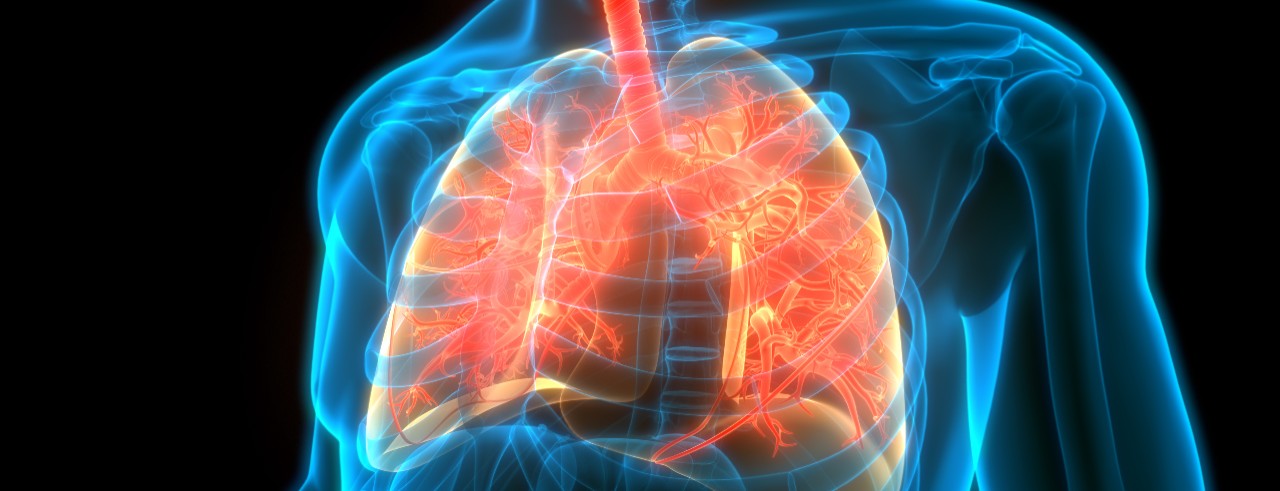
A new treatment for rare muscular disease
UC researchers present findings that could give patients with Pompe disease a better quality of life
Rare diseases are sometimes the most difficult to treat because of a lack of research and fewer participants to study.
An example would be those who have Pompe disease, a genetic condition when a body can't make a protein that breaks down a complex sugar, called glycogen, for energy. Too much glycogen builds up and damages muscles and organs. The disease causes muscle weakness and trouble breathing and can affect the heart and muscles.
In the case of Pompe disease, however, University of Cincinnati researchers have found a newer, more effective treatment for the rare condition that could become the new standard of care.
Hani Kushlaf, MD, an associate professor in both the Department of Neurology and Rehabilitation Medicine and the Department of Pathology and Laboratory Medicine at UC and principal investigator of a study led at UC, will present findings on this new treatment virtually at the American Academy of Neurology on April 20.

Hani Kushlaf, MD, an associate professor in both the Department of Neurology and Rehabilitation Medicine and the Department of Pathology and Laboratory Medicine at UC and principal investigator of the study. Photo/UC Health
Kushlaf, a UC Health physician, says Pompe disease affects about 1 in 40,000 people in the United States. It can impact children, but it can also present later in life as well. Left untreated, it can result in progressive loss of function of muscles in limbs and respiration leading to the need for wheelchair use and respiratory support.
“In this clinical trial, we tested a new drug, or enzyme replacement therapy (avalglucosidase alfa), to see if it was more effective and safer than the currently approved therapy, also an enzyme replacement therapy, in patients with late-onset Pompe disease,” he says. “It turns out that it is safer and more effective than the current FDA-approved therapy. This new enzyme will likely become the standard of care for patients with the disease and has already been submitted for Food and Drug Administration approval. This is a big deal for patients with this rare disease, as t-PA was for stroke.”
These results are extremely promising for finding a new and effective treatment for [Pompe] disease.
Hani Kushlaf, MD
This study was double-blinded, meaning neither the participants nor the researchers knew which treatment was being administered via an infusion. In 51 patients who received the new treatment, researchers saw an improvement in respiratory muscle function, endurance and muscle strength, in addition to an overall better quality of life, when compared to patients on the current standard of care therapy.
“These results are extremely promising for finding a new and effective treatment for this disease,” adds Kushlaf, who is also a member of the UC Gardner Neuroscience Institute. “With these results, we can take the next steps in having it used widely in this patient population, improving their outcomes and giving them a better life.”
Featured photo of lungs by iStock.
Impact Lives Here
The University of Cincinnati is leading public urban universities into a new era of innovation and impact. Our faculty, staff and students are saving lives, changing outcomes and bending the future in our city's direction. Next Lives Here.
Stay up to date on all UC's COVID-19 stories, or take a UC virtual visit and begin picturing yourself at an institution that inspires incredible stories.
The trial is sponsored by the pharmaceutical company Sanofi. Kushlaf belongs to an author group appointed by Sanofi and is responsible for disseminating the findings of this trial.
Related Stories
192nd Hooding ceremony at UC Law to recognize Class of 2025
Event: May 17, 2025 1:00 PM
The University of Cincinnati College of Law celebrates its graduates, alumni at the 192nd Hooding Ceremony.
Hoxworth Co-Director David Oh, MD, named to America's Blood...
May 14, 2025
Hoxworth Blood Center, University of Cincinnati, is proud to announce that David Oh, MD, interim co-director and chief medical officer, has been appointed to America’s Blood Centers (ABC) Board of Directors.
Osher Center, Cancer Center partnership receives $2 million gift...
May 14, 2025
The Cincinnati Business Courier highlighted a $2 million gift from John and Carrie Hayden to establish and endow a community learning kitchen that emphasizes the vital role of nutrition not only in the prevention but also the treatment of chronic disease.
